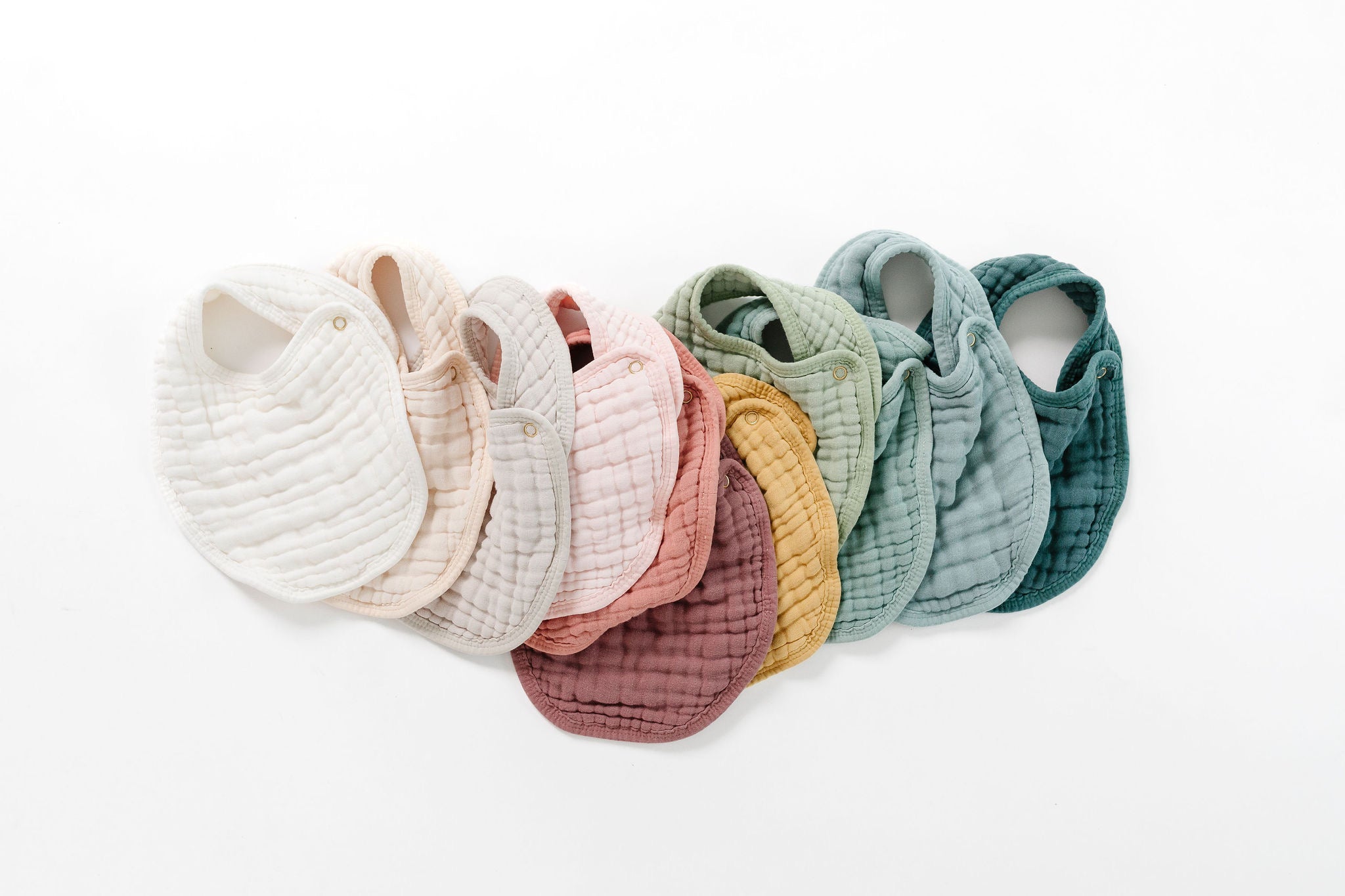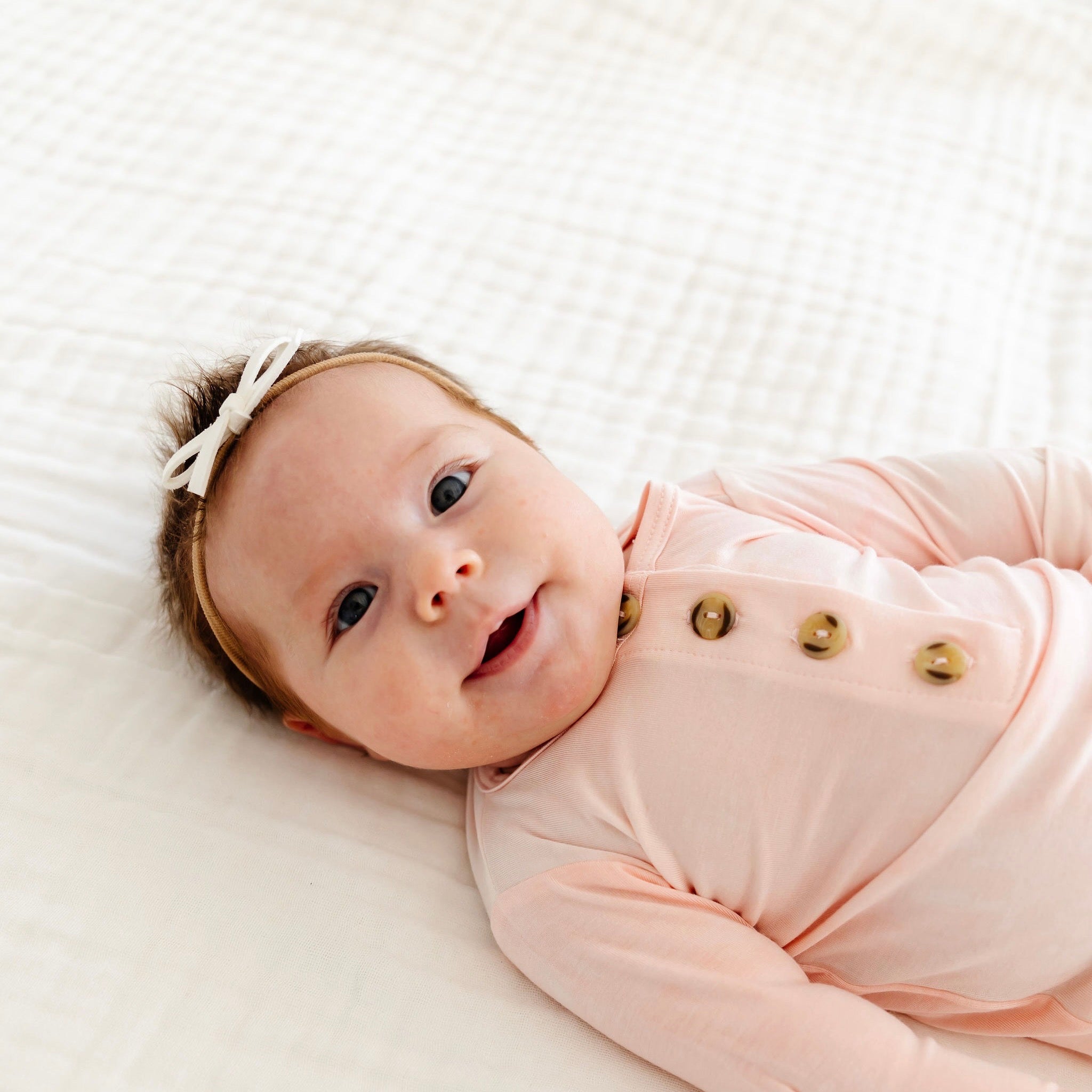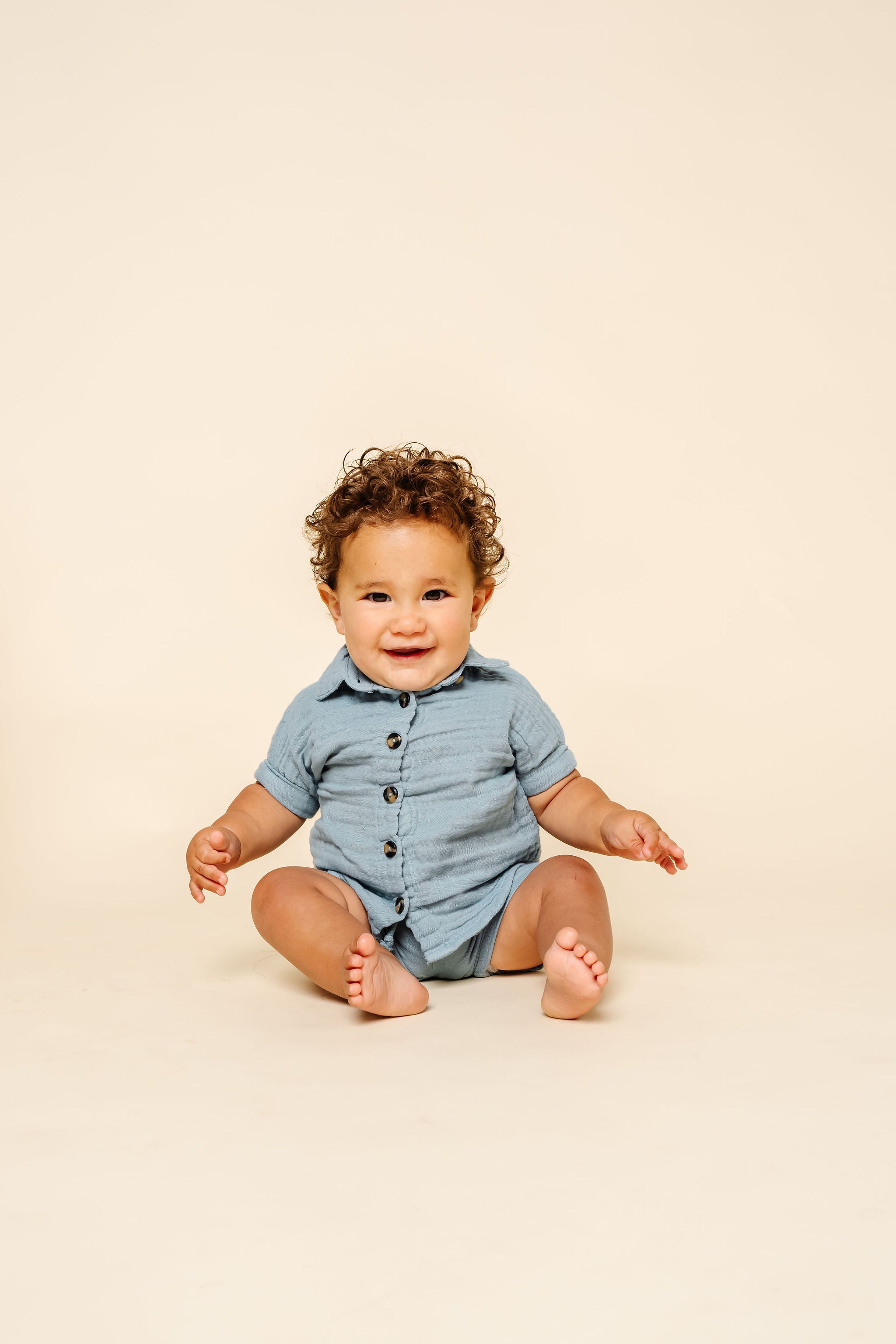
Teething Signs + Comfort Tips
Teething — one of those milestones that’s exciting and a little tricky all at once. 🤍 Your baby’s first teeth usually start to appear around 6 months, but some little ones begin as early as 4 months. Here’s what to watch for and a few ways to bring comfort during those fussy days.
Common Signs of Teething
Every baby is different, but here are a few cues that new teeth might be on the way:
-
Increased drooling (and those adorable drool-soaked bibs!)
-
Chewing or gnawing on hands, toys, or anything they can reach
-
Red or swollen gums where the tooth is coming in
-
Fussiness or disrupted sleep — especially at night
-
Loss of appetite or more comfort nursing
-
Rubbing ears or cheeks (sometimes referred pain from sore gums)

Ways to Comfort Your Teething Baby
-
Offer a chilled teether — the cool temperature helps soothe sore gums.
-
Try a gentle gum massage with a clean finger.
-
Keep drool under control with soft bibs to prevent skin irritation.
-
Stick to your routine — consistency brings comfort when everything feels new.
-
Extra snuggles — sometimes, all they really need is you. 🤍

Teething can come and go in waves, and every baby’s timeline looks a little different. It’s all part of the growing process — and before you know it, that first little toothy smile will make all the sleepless nights worth it.



Leave a comment
This site is protected by hCaptcha and the hCaptcha Privacy Policy and Terms of Service apply.